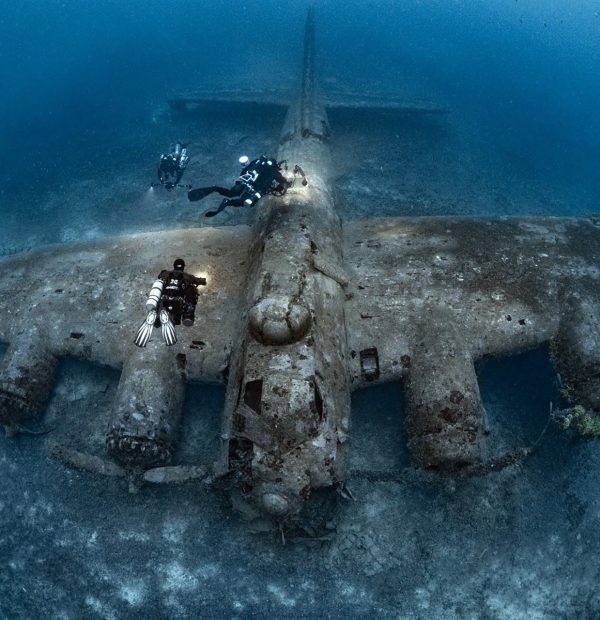Tuesday, 23 April 2024
Menu

Technical divers from Finland have visited the wreck of the patrol ship Uisko, which was sunk by a Soviet torpedo bomber I£-4 on 16 September 1943. The wreck of the vessel flying the flag of the Finnish Navy rests at a depth of 68 metres. The remains of the ship in the middle of the Gulf of Finland were found on 8 May 2008 by researchers from the Estonian Maritime Museum.

Uisko was built in a Belgian shipyard in 1938 and measured 40.4 metres long and 7.1 metres wide. Originally, while still a Celtic trawler, she fished in the North Sea. However, this lasted rather briefly, only until 1939. Then the ship was bought by the Finns, who in 1941 incorporated her into navy their country.
From then on, the vessel was known as the patrol ship Uisko. The recent trawler was armed with a 75mm cannon, anti-aircraft guns and depth charges. The main task facing the crew was the search and detection of Soviet ships submarines. The Soviets, wanting to get to the Baltic Sea, had to cross the Gulf of Finland first.

On 16 September 1943, together with another patrol vessel, Tursas, Uisko drifted with her engines off. Both vessels were in the middle of the The Gulf of Finland. The crew was conducting a routine search for enemy submarines, using hydro-acoustic listening devices. Just then a Soviet torpedo bomber Il-4 appeared in the sky, with Alexander Ivanovich Razgonin at the helm.
While the escort ships Uisko and Tursas were in submarine listening position 59°47’5 and 24°58′, an enemy aircraft approached them from the Tallinn side at 15.54 h. The aircraft flew at low altitude and turned from the west side of Tursas towards Uisko. It dropped a torpedo at a distance of about 800-1000 metres from a height of less than 50 metres.
A torpedo hit the starboard side and the ship exploded at 15.55. Tursas rescued the two surviving men (Sergeant Kjellin and Sailor Antikainen) and Corporal Eskelinen, who was killed in action. The site of the ship’s sinking was marked with a spar buoy, depth 75 metres. The plane was observed and an alarm was raised on both vessels. Both ships were underway when the torpedo was dropped. 2 officers, 10 NCOs and 6 sailors were killed – The course of events as written in the war diary – link to original

While the crew of the patrol boat Tursas managed to get the engine running, the Uisko sailors were not so lucky. The attack from the Soviet bomber was swift and surprising, and therefore deadly effective. Only two sailors from the Finnish ship’s crew were saved, and the Uisko, after being hit by a torpedo sank in less than 10 minutes.
Due to the low cloud cover, Alexander Ivanovich Razgonin was walking at a low altitude, as a result of which his attack was completely sudden for the Finns. The ship, which had stopped for a hydroacoustic search, did not have time to move or open anti-aircraft fire and received a torpedo hit in the middle of the hull. Nothing prevented the pilot from making two circles and watching the agony of his victim, who disappeared completely under water after 8-10 minutes. Along with the ship, 19 sailors were killed, including Lieutenant Commander Sandholm. In the following days of the month, the crew of the Razgonin was unsuccessful, although it flew several times in cross-country flights – – transcript from
Today the wreck of the patrol vessel Uisko rests on the seabed at a depth of 68 metres. As the vessel suffered extensive damage from the explosion it broke through and is in two parts.










Welcome to DIVERS24.COM, your daily source of scuba news, freediving, scuba diving information, and equipment reviews. Our comprehensive coverage of the dive industry from A to Z provides you with all the latest scuba news, training updates, underwater photography tips, and everything else related to scuba diving. Whether you’re a beginner or an experienced diver looking for more knowledge about scuba gear or techniques – we’ve got it covered! With our in-depth articles written by experienced divers who have been there and done that, you are sure to find exactly what you need here at Divers24.com. Dive into scuba news today!
Underwater Media Sp. z o.o.
Szafarnia 11/F8,
80-755 Gdansk, Poland
Welcome to DIVERS24.COM, your daily source of scuba news, freediving, and scuba diving information. Sign in for a weekly news update and discount coupons for dive gear and apparel.
@2023 - underwatermedia.pl. All Right Reserved. Designed and Developed by Tworzenie stron internetowych Gdansk

The Divers24 portal is currently the largest online medium treating diving in Poland. Since 2010 we have been providing interesting and important information from Poland and around the world on all forms of diving and related activities.
Contact us: info@divers24.com